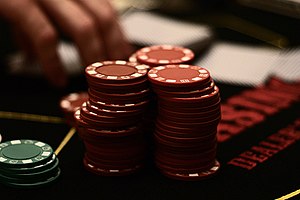Singapore Problem Gambling Statistics

A recent study from Singapore conducted on adults aged 55 years and above using the Canadian problem gambling index (CPGI) (Ferris and Wynne, 2001), reported a lifetime gambling participation rate of 56.2%. Among those who had lifetime gambling, 69.7% had gambled in the past 12 months and 2.2% met the criteria for problem gambling. The National Council on Problem Gambling (NCPG) commissions the Survey on Participation in Gambling Activities among Singapore Residents every three years. The survey includes screening questions to detect probable pathological gamblers, based on diagnostic criteria in the fourth edition of the Diagnostic and Statistical Manual of Mental. World gambling statistics show that around 26% of the population gamble. That means around 1.6 billion people worldwide gamble and 4.2 billion gamble at least once every year. Teenagers all over the world are becoming addicted to gaming, and Singapore’s teens are not exempt from this worldwide phenomenon — In fact, studies show that Singaporean teens spend more time gaming than their American counterparts, 20 and 13 hours respectively. Problem Gambling and Poverty A developing body of evidence suggests that problem gambling prevalence rates are higher in populations experiencing poverty when compared to the gen-eral population. The temporal order of poverty and problem gambling remains unclear although some research suggests problem gambling precedes pov-erty.
Around 3.2 million Japanese have likely suffered from gambling addiction, a government survey shows, amid renewed concern about pathological gambling since a law to legalize casinos took effect last year.
An interim report on the survey, released Friday, said 3.6 percent of respondents were suspected of having developed gambling addiction at some point, a proportion that works out to around 3.2 million people nationwide.
It also said that 0.8 percent — equivalent to around 700,000 people — likely were addicted at some point in the past year, with the average age at 46.5. Among them, pachinko accounted for the most money spent on gambling, at an average of ¥58,000 per month. The survey of 10,000 adults received valid responses from 4,685. People between ages 20 and 74 were randomly selected for face-to-face interviews at 300 locations.
The expert who oversaw the survey, Susumu Higuchi, director of the National Hospital Organization Kurihama Medical and Addiction Center, said it would aid “not only the government but medical practitioners to work toward better treatment.”
The government is planning to open casinos in “integrated resorts” encompassing hotels, conference rooms, theaters and other entertainment facilities in the hope of boosting tourism and local economies.
A bill requiring the central and local governments to formulate concrete plans to combat addiction, such as setting up advice lines, was submitted by the ruling coalition to the House of Representatives in June but had to be scrapped when the Lower House was dissolved on Thursday.
While the survey organizer said the data for Japan could not be strictly compared with those from other countries due to differences in methodology, the report noted that the figures for suspected gambling addicts in 11 other countries and regions — including the United States, South Korea and Hong Kong — were lower, in the range of 0.2 to 2.4 percent.

As part of efforts to combat gambling addiction, the government decided recently to establish a system by the end of fiscal 2022 to limit online race betting. Currently, race betting is legally restricted to horse, powerboat, bicycle and motorcycle racing.

In a time of both misinformation and too much information, quality journalism is more crucial than ever.
By subscribing, you can help us get the story right.